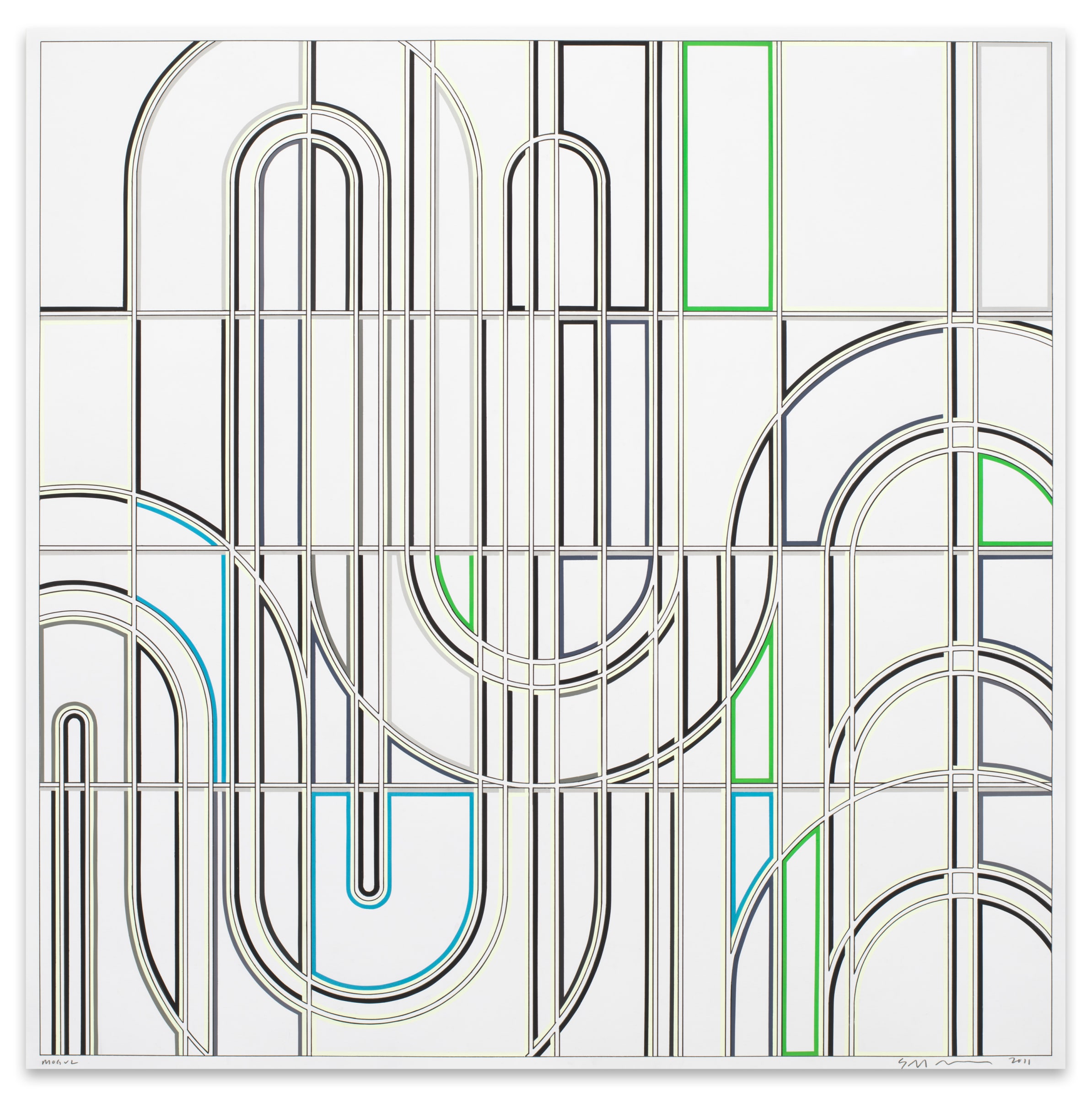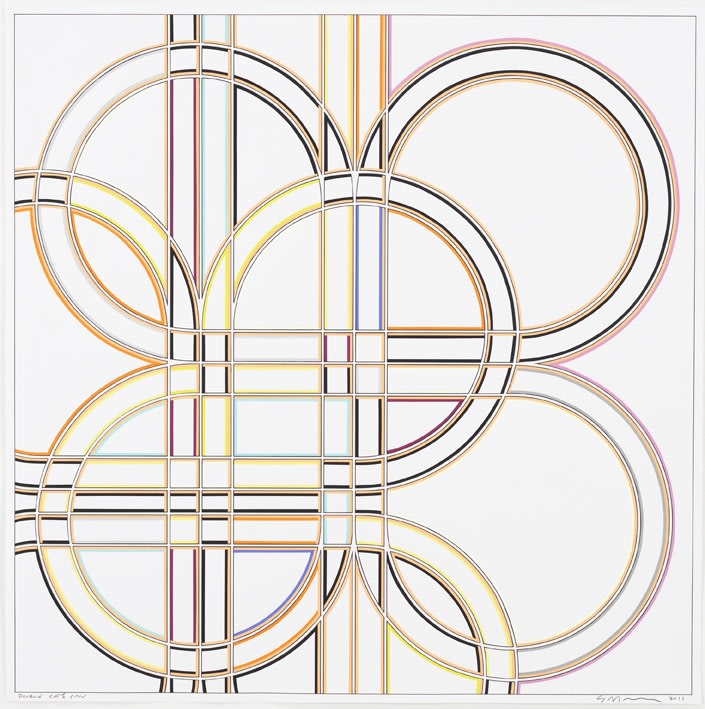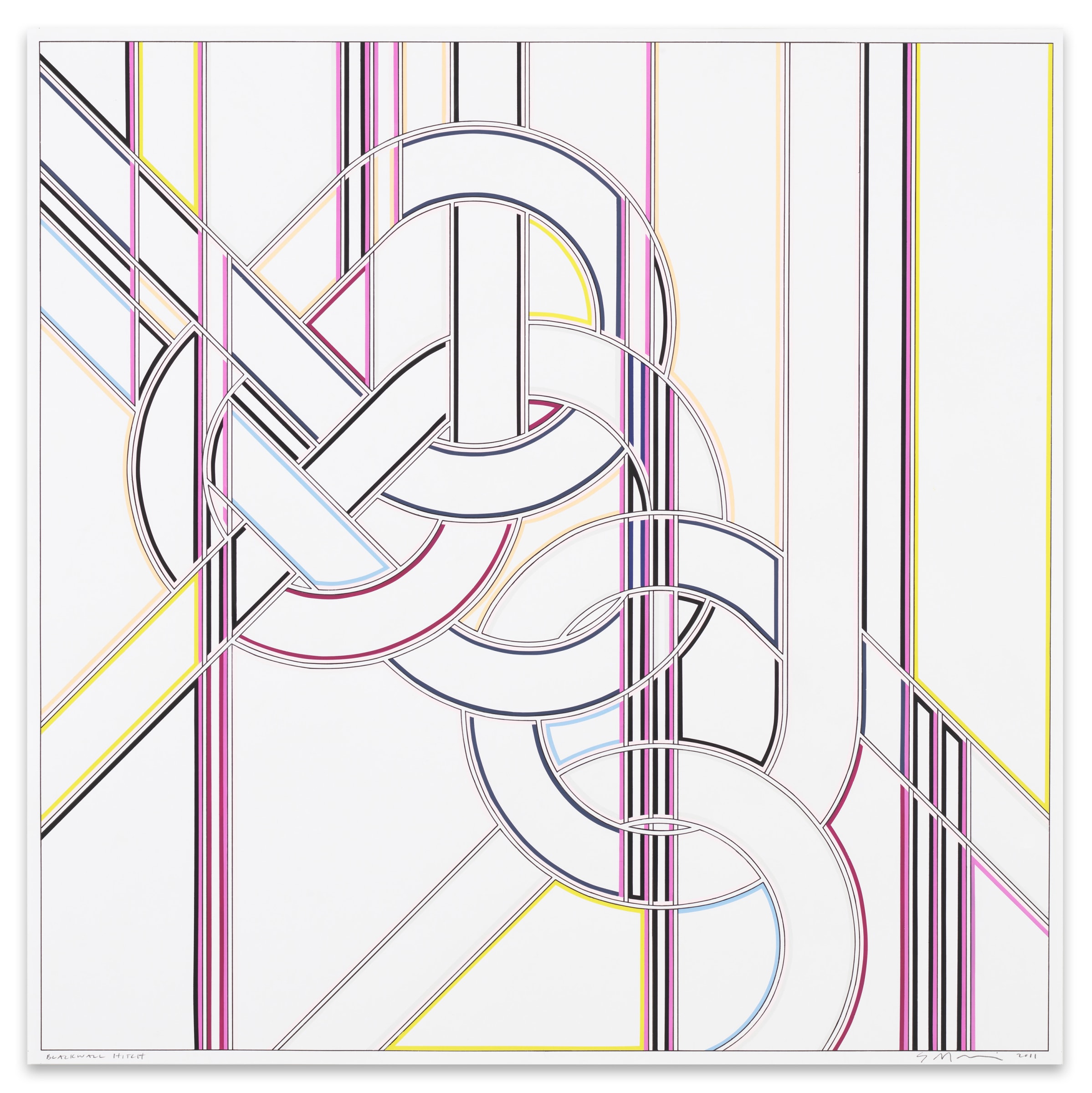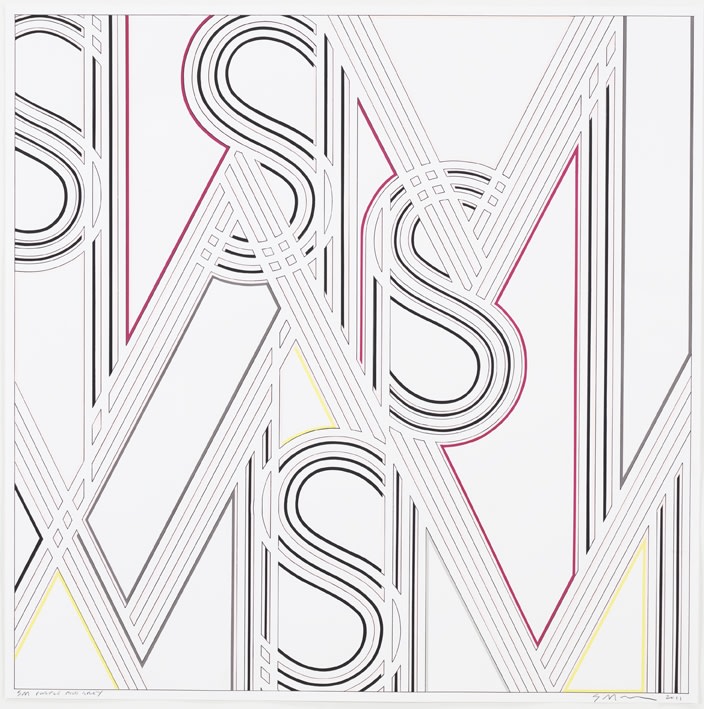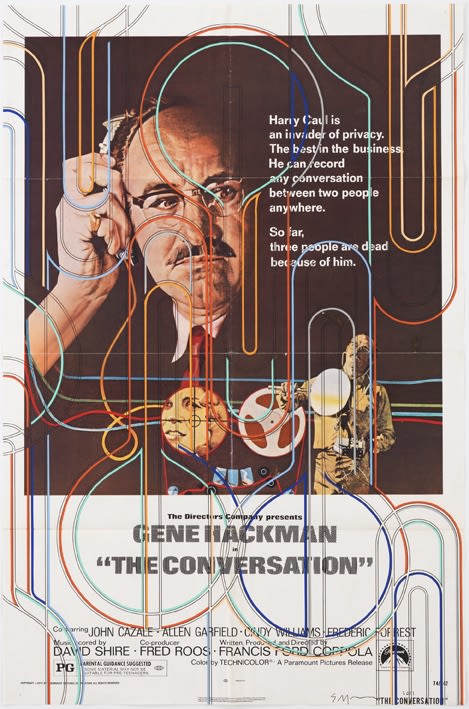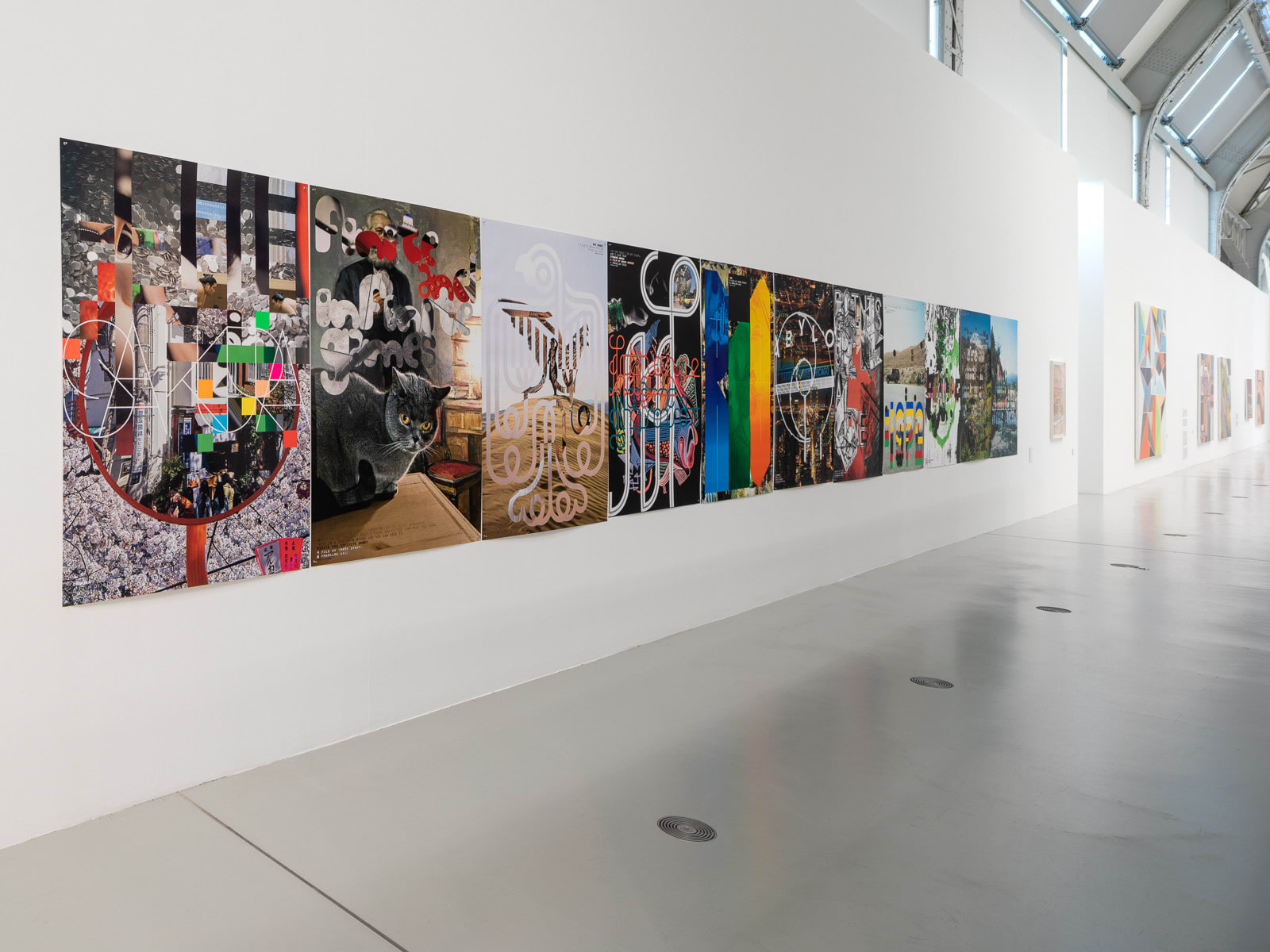Sarah Morris: John Hancock
Capitain Petzel Berlin is pleased to announce “John Hancock”, an exhibition of new works by Sarah Morris and her film ’Points on a Line’ (2010).
Sarah Morris is one of the most intriguingly contradictory artists of her generation, known for her complex abstractions, which play with architecture, design and the psychology of urban environments. Morris views her paintings as parallel to her films – both trace urban, social and bureaucratic topologies. In both these media, she explores the psychology of the contemporary city and its architecturally encoded politics. Morris assesses what today’s urban structures, bureaucracies, cities and nations might conceal and surveys how a particular moment can be inscribed and embedded into its visual surfaces. Often, these non-narrative fictional analyses result in studies of conspiratorial power, structures of control, and the mapping of global sociopolitical networks.
In this exhibition, Morris will be exhibiting a new series of paintings, “John Hancock”. Using as a starting point the iconic 1967 Skidmore, Owings and Merrill building, called the John Hancock Center, Morris uses forms reminiscent of the structure of the first multi-use high rise building in America, named for John Hancock Mutual Life Insurance company, a developer and original tenant of the building.
An antenna, an ancillary spiral, the X-bracing exterior. Morris’s paintings create forms that are continuously splintering and self-generating, and without resolution, creating after-images of capitalism and pre-images of new systems of control. The paintings also play with the history of John Hancock as the ‘father of the signature’ and the corporatization of Hancock’s signature for Mutual Life. His flamboyant, stylish signature as a sign of ironic mockery and belligerence. Morris parallels and streamlines the corporatization of Hancock’s signature using her own initials in the new work, invoking a long history of not only industrial design, but also the role of the signature in relation to its confirmation of ownership, agreement to act and validation of artistic work.
The exhibition will also feature Morris’s film “Points on a Line” (2010). The Farnsworth House, Plano, Illinois and the Glass House, New Canaan, Connecticut. Philip Johnson and Mies van der Rohe. Curator and architect. Architect and architect. The film documents a shared desire to build structures that might change the way we think about a house, a form and a context. These two buildings were the result of shared ideas and collective desire. But they also complicate ideas of the copy and the original and the chronologies of Modernism.
By carefully documenting the daily maintenance of these two buildings and lingering over the precise placement of the structures in space and of objects within each structure, we are presented with a clear view of places that have gone beyond their initial modest use and become the intersection of a dialogue that was both personal and professional.
Morris filmed at both sites over the course of several months, among other locations including The Four Seasons Restaurants, the Seagram Building, Mies van der Rohe’s infamous Lake Shore Drive, and Chicago’s Newberry Library. Morris utilizes The Four Seasons, a place that Philip Johnson practically used as his personal office, as the meeting point between the two architects. Morris’s film is both a record of preservation of two structures and a document of power plays that left a mark in the pragmatic idealism of the late modern period.
–
Die Galerie Capitain Petzel Berlin freut sich, die Ausstellung John Hancock mit neuen Werken von Sarah Morris und ihren Film Points on a Line (2010) zeigen zu können.
Sarah Morris ist eine international anerkannte Malerin und Filmemacherin. Sie ist bekannt für ihre komplexen Abstraktionen, die mit Architektur, Design und der Psychologie innerhalb städtischer Milieus spielen. Wie ihre Bilder beschäftigen sich auch Morris’ Filme mit urbanen, gesellschaftlichen und bürokratischen Strukturen. Mit beiden Medien begibt sie sich in die Tiefen der Psychologie der modernen Stadt und der darin architektonisch verschlüsselten Politik. Morris untersucht, was die heutigen städtischen Strukturen, Bürokratien, was Städte und Nationen vielleicht verbergen, und wie ein bestimmter historischer Moment in visuelle Oberflächen eingeschrieben werden kann. Die fiktiven Analysen führen häufig zu Studien über konspirative Macht, Kontrollstrukturen und die Abbildung von globalen, gesellschafts-politischen Netzwerken.
In dieser Ausstellung stellt Morris mit John Hancock eine neue Bildserie vor. Ausgangspunkt ist das berühmte John Hancock Center, entworfen Ende der 60er-Jahre vom Architekturbüro Skidmore, Owings and Merrill. Die Künstlerin verwendet Zitate, die an die Struktur dieses ersten Mehrzweck-Hochhauses der USA erinnern, das nach der John Hancock Mutual Life Insurance Company, Unternehmen und ursprünglicher Mieter des Gebäudes, benannt ist.
Eine Antenne, eine Feuertreppe, die Kreuzverstrebungen des Gebäudes – Morris’ Bilder zeigen Formen, die fortlaufend zersplittern und sich selbst erschaffen und – wie beiläufig – Nachbilder von Kapitalismus und Vorbilder neuer Kontrollsysteme evozieren. Zugleich spielen sie mit John Hancocks symbolischer Rolle als „Vater der Signatur“ und der Verwendung seiner Unterschrift für die John Hancock Mutual Life Insurance Company. Hancocks auffällige, stilvolle Unterschrift gilt als Zeichen ironischer Verspottung und Streitlust. Morris eignet sich Hancocks Signatur an und strafft sie, indem sie ihre eigenen Initialen in dem neuen Werk nutzt und eine lange Geschichte heraufbeschwört – nicht nur die des industriellen Designs, sondern auch der Rolle der Signatur in Zusammenhang mit der Ästhetik.
Im Rahmen der Ausstellung wird auch Morris’ Film Points on a Line (2010) über das Farnsworth House, Plano, Illinois, von Mies van der Rohe und Glass House, New Canaan, Connecticut, von Philip Johnson gezeigt. Der Film dokumentiert den Wunsch, Strukturen zu erschaffen, die den Blick des Betrachters auf ein Haus, eine Form oder einen Kontext verändern könnten. Glass House und Farnsworth House – diese beiden Gebäude waren das Ergebnis geteilter Ideen und kollektiver Leidenschaft. Sie verkomplizieren aber auch die Begriffe von Kopie und Original und von den Chronologien der Moderne.
Durch sorgfältiges Dokumentieren der täglichen Instandhaltung dieser beiden Gebäude und durch Verweilen an den konkreten Strukturen im Raum und an Objekten innerhalb der Strukturen offenbart sich für uns ein klarer Blick auf Orte, die über ihre ursprüngliche schlichte Nutzung hinausgewachsen und zu Schnittstellen eines Dialoges geworden sind, der gleichermaßen persönlich und professionell war.
Morris hat beide Orte über mehrere Monate hinweg gefilmt, aber auch andere Gebäude wie etwa das Restaurant The Four Seasons, das Seagram Building in New York, Mies van der Rohes berühmten Lake Shore Drive und die Newberry Library in Chicago. Sie nutzte das Restaurant The Four Seasons, das Philip Johnson praktisch als persönliches Büro nutzte, als Schnittpunkt für beide Architekten. Morris’ Film ist sowohl ein Protokoll des Erhalts von zwei Strukturen als auch eine Dokumentation von Machtspielen, die Spuren in dem pragmatischen Idealismus der späten Moderne hinterlassen.
-
 Sarah MorrisPoints on a Line, 2010Red Code / HD35 minutesEdition 3/5, 1 AP
Sarah MorrisPoints on a Line, 2010Red Code / HD35 minutesEdition 3/5, 1 AP -
 Sarah MorrisChicago, 2011Red Code / HD68 minutes 11 secondsEdition 5/5, 1 AP
Sarah MorrisChicago, 2011Red Code / HD68 minutes 11 secondsEdition 5/5, 1 AP -
![Sarah Morris SM Outlined [Initials], 2011 Household gloss paint on canvas 84.25 x 84.25 inches 214 x 214 cm](data:image/gif;base64,R0lGODlhAQABAIAAAAAAAP///yH5BAEAAAAALAAAAAABAAEAAAIBRAA7) Sarah MorrisSM Outlined [Initials], 2011Household gloss paint on canvas84.25 x 84.25 inches
Sarah MorrisSM Outlined [Initials], 2011Household gloss paint on canvas84.25 x 84.25 inches
214 x 214 cm -
![Sarah Morris Antenna [John Hancock], 2011 Household gloss paint on canvas 113.78 x 113.78 inches 289 x 289 cm](data:image/gif;base64,R0lGODlhAQABAIAAAAAAAP///yH5BAEAAAAALAAAAAABAAEAAAIBRAA7) Sarah MorrisAntenna [John Hancock], 2011Household gloss paint on canvas113.78 x 113.78 inches
Sarah MorrisAntenna [John Hancock], 2011Household gloss paint on canvas113.78 x 113.78 inches
289 x 289 cm -
![Sarah Morris Spiral [John Hancock], 2011 Household gloss paint on canvas 60.04 x 60.04 inches 152.5 x 152.5 cm](data:image/gif;base64,R0lGODlhAQABAIAAAAAAAP///yH5BAEAAAAALAAAAAABAAEAAAIBRAA7) Sarah MorrisSpiral [John Hancock], 2011Household gloss paint on canvas60.04 x 60.04 inches
Sarah MorrisSpiral [John Hancock], 2011Household gloss paint on canvas60.04 x 60.04 inches
152.5 x 152.5 cm -
![Sarah Morris SM Navy and Yellow [Initials], 2011 Household gloss paint on canvas 48.03 x 48.03 inches 122 x 122 cm](data:image/gif;base64,R0lGODlhAQABAIAAAAAAAP///yH5BAEAAAAALAAAAAABAAEAAAIBRAA7) Sarah MorrisSM Navy and Yellow [Initials], 2011Household gloss paint on canvas48.03 x 48.03 inches
Sarah MorrisSM Navy and Yellow [Initials], 2011Household gloss paint on canvas48.03 x 48.03 inches
122 x 122 cm -
![Sarah Morris SM Cyan and Yellow [Initials], 2011 Household gloss paint on canvas 48.03 x 48.03 inches 122 x 122 cm](data:image/gif;base64,R0lGODlhAQABAIAAAAAAAP///yH5BAEAAAAALAAAAAABAAEAAAIBRAA7) Sarah MorrisSM Cyan and Yellow [Initials], 2011Household gloss paint on canvas48.03 x 48.03 inches
Sarah MorrisSM Cyan and Yellow [Initials], 2011Household gloss paint on canvas48.03 x 48.03 inches
122 x 122 cm -
![Sarah Morris SM Purple and Grey [Initials], 2011 Household gloss paint on canvas 48.03 x 48.03 inches 122 x 122 cm](data:image/gif;base64,R0lGODlhAQABAIAAAAAAAP///yH5BAEAAAAALAAAAAABAAEAAAIBRAA7) Sarah MorrisSM Purple and Grey [Initials], 2011Household gloss paint on canvas48.03 x 48.03 inches
Sarah MorrisSM Purple and Grey [Initials], 2011Household gloss paint on canvas48.03 x 48.03 inches
122 x 122 cm -
![Sarah Morris SM Peach and Red [Initials], 2011 Household gloss paint on canvas 48.03 x 48.03 inches 122 x 122 cm](data:image/gif;base64,R0lGODlhAQABAIAAAAAAAP///yH5BAEAAAAALAAAAAABAAEAAAIBRAA7) Sarah MorrisSM Peach and Red [Initials], 2011Household gloss paint on canvas48.03 x 48.03 inches
Sarah MorrisSM Peach and Red [Initials], 2011Household gloss paint on canvas48.03 x 48.03 inches
122 x 122 cm -
 Sarah MorrisSkrepkus, 2011Ink and gouache on paper30.16 x 30.16 inches
Sarah MorrisSkrepkus, 2011Ink and gouache on paper30.16 x 30.16 inches
76.6 x 76.6 cm -
 Sarah MorrisMogul, 2011Ink and gouache on paper30.16 x 30.16 inches
Sarah MorrisMogul, 2011Ink and gouache on paper30.16 x 30.16 inches
76.6 x 76.6 cm -

-
 Sarah MorrisDouble Cats Paw, 2011Ink and gouache on paper30.16 x 30.16 inches
Sarah MorrisDouble Cats Paw, 2011Ink and gouache on paper30.16 x 30.16 inches
76.6 x 76.6 cm -
 Sarah MorrisBlackwall Hitch, 2011Ink and gouache on paper30.16 x 30.16 inches
Sarah MorrisBlackwall Hitch, 2011Ink and gouache on paper30.16 x 30.16 inches
76.6 x 76.6 cm -
 Sarah MorrisPurple and Grey SM, 2011Ink and gouache on paper30 x 30 inches
Sarah MorrisPurple and Grey SM, 2011Ink and gouache on paper30 x 30 inches
76.6 x 76.6 cm -
 Sarah MorrisThe Conversation, 2011Ink and gouache on paper26.97 x 40.94 inches
Sarah MorrisThe Conversation, 2011Ink and gouache on paper26.97 x 40.94 inches
68.5 x 104 cm -
 Sarah MorrisPoints on a Line, 2011Silkscreen on paper69.29 x 47.24 inches
Sarah MorrisPoints on a Line, 2011Silkscreen on paper69.29 x 47.24 inches
176 x 120 cmEdition of 100
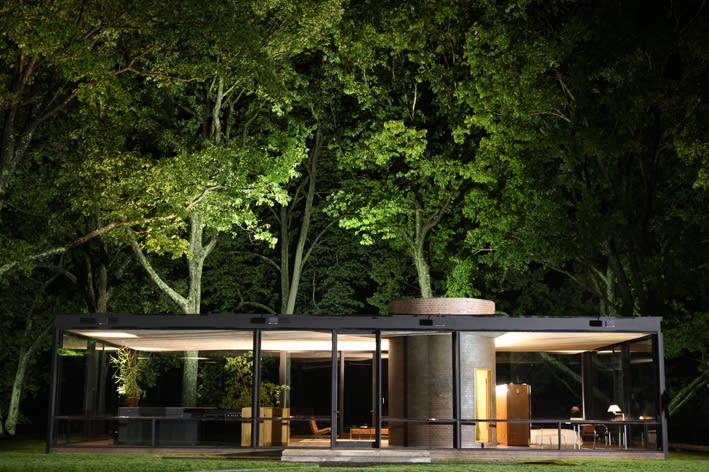

![Sarah Morris SM Outlined [Initials], 2011 Household gloss paint on canvas 84.25 x 84.25 inches 214 x 214 cm](https://artlogic-res.cloudinary.com/w_2400,h_2400,c_limit,f_auto,fl_lossy,q_auto/artlogicstorage/capitainpetzel/images/view/14270e57ccfe2b3b41835c089a717270j/capitainpetzel-sarah-morris-sm-outlined-initials-2011.jpg)
![Sarah Morris Antenna [John Hancock], 2011 Household gloss paint on canvas 113.78 x 113.78 inches 289 x 289 cm](https://artlogic-res.cloudinary.com/w_2400,h_2400,c_limit,f_auto,fl_lossy,q_auto/artlogicstorage/capitainpetzel/images/view/4e26a93cf0ce793e5554bcacfe3c54a6j/capitainpetzel-sarah-morris-antenna-john-hancock-2011.jpg)
![Sarah Morris Spiral [John Hancock], 2011 Household gloss paint on canvas 60.04 x 60.04 inches 152.5 x 152.5 cm](https://artlogic-res.cloudinary.com/w_2400,h_2400,c_limit,f_auto,fl_lossy,q_auto/artlogicstorage/capitainpetzel/images/view/a7dcdb2cea4ac9453be1e1238dc432caj/capitainpetzel-sarah-morris-spiral-john-hancock-2011.jpg)
![Sarah Morris SM Navy and Yellow [Initials], 2011 Household gloss paint on canvas 48.03 x 48.03 inches 122 x 122 cm](https://artlogic-res.cloudinary.com/w_2400,h_2400,c_limit,f_auto,fl_lossy,q_auto/artlogicstorage/capitainpetzel/images/view/9ce70d350491be3d599ec36fc6fe1a86j/capitainpetzel-sarah-morris-sm-navy-and-yellow-initials-2011.jpg)
![Sarah Morris SM Cyan and Yellow [Initials], 2011 Household gloss paint on canvas 48.03 x 48.03 inches 122 x 122 cm](https://artlogic-res.cloudinary.com/w_2400,h_2400,c_limit,f_auto,fl_lossy,q_auto/artlogicstorage/capitainpetzel/images/view/2bebfadd0dd86df77dbc537a87737b68j/capitainpetzel-sarah-morris-sm-cyan-and-yellow-initials-2011.jpg)
![Sarah Morris SM Purple and Grey [Initials], 2011 Household gloss paint on canvas 48.03 x 48.03 inches 122 x 122 cm](https://artlogic-res.cloudinary.com/w_2400,h_2400,c_limit,f_auto,fl_lossy,q_auto/artlogicstorage/capitainpetzel/images/view/391b3635496abc758e1f9796bad9e424j/capitainpetzel-sarah-morris-sm-purple-and-grey-initials-2011.jpg)
![Sarah Morris SM Peach and Red [Initials], 2011 Household gloss paint on canvas 48.03 x 48.03 inches 122 x 122 cm](https://artlogic-res.cloudinary.com/w_2400,h_2400,c_limit,f_auto,fl_lossy,q_auto/artlogicstorage/capitainpetzel/images/view/24f9b8c709c097b03a99c78fdef9391cj/capitainpetzel-sarah-morris-sm-peach-and-red-initials-2011.jpg)

